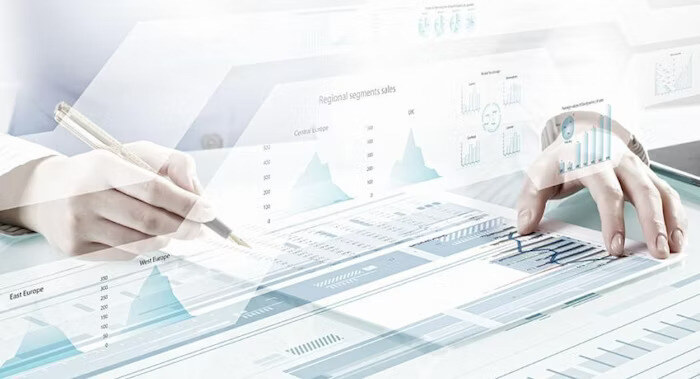
Enterprise Asset Management in 2022: Meeting the Data Management Challenge
Explore how asset management is meeting data management challenges by leveraging a cloud software for accessibility.
Solutions
Workplace Management Solutions
Real Estate Management Solutions
Maintenance Management Solutions
Energy Management Solutions
Engineering Document Management Solutions
Asset Management Solutions
Automate campus scheduling for classes, meetings, and exams with our EMS software.
Plan and manage conferences effortlessly with EMS software to impress guests and streamline operations.
Boost workplace flexibility and maximize space use with seamless desk and room booking.
Organize workplace or campus events smoothly, creating memorable experiences.
Optimize workspace, manage allocations efficiently, and reduce costs with our space management solutions.
Deliver projects on time and within budget by improving communication, collaboration, and efficiency with our software.
Streamline lease accounting for ASC 842, IFRS, and GASB compliance.
Manage leases efficiently by tracking key dates, analyzing costs, and ensuring compliance.
Centralize data and analytics for better insights, faster negotiations, and revenue growth.
Centralize facility and asset maintenance, automate work orders, and ensure compliance with our CMMS software.
Extend asset life, reduce downtime, and prevent costly repairs with data-driven monitoring.
Prevent equipment failures and extend asset life by detecting and addressing issues early.
Make sustainable, cost-efficient energy decisions by monitoring and optimizing power consumption.
Remotely monitor and control equipment with real-time data to predict issues, boost efficiency, and reduce downtime.
Easily share and collaborate on documents, creating a single source of truth for engineers and contractors.
Manage and analyze assets across their lifecycle to schedule maintenance, reduce downtime, and extend lifespan.
Improve visibility, automate work orders, and ensure compliance for efficient facility and asset management.
Resources
Browse our full library of resources all in one place, including webinars, whitepapers, podcast episodes, and more.
Support
Looking for access to technical support, best practices, helpful videos, or training tools? You’ve come to the right place.
About Accruent
Get the latest information on Accruent, our solutions, events, and the company at large.

Discover the power of efficient asset management systems. Learn how these systems can streamline your operations and maximize the value of your assets.
Table of contents
Managing a business involves keeping track of a number of tangible and intangible assets over time. Assets can include physical items such as equipment, machinery, vehicles, or inventory, as well as intangible assets like software licenses, patents, or intellectual property. As a company grows, its assets grow — as do the number of people interacting with those assets on a daily basis. An asset management system is a systematic way of tracking, monitoring, and managing an organization's assets to improve productivity, avoid equipment failure, remain compliant, improve customer satisfaction, and keep employees safe.
The primary purpose of an asset management system is to provide comprehensive visibility and control over an organization's assets, allowing for efficient planning, utilization, maintenance, and disposal of those assets. It typically involves the use of specialized software or tools that enable the collection, storage, and analysis of data related to the assets, including information about their location, condition, maintenance history, depreciation, and other relevant details.

Typically, a comprehensive asset management platform involves a lot of moving parts. It can touch nearly every aspect of the business and involves a number of systems and teams. A good asset management system encompasses a variety of functions, including:
All of these functions work together to improve operational efficiency, cut cost through optimized asset utilization and maintenance, ensure compliance, reduce downtime, and enhance decision-making based on accurate asset data.
Asset management software is specifically designed to support asset management systems by helping companies track, monitor, and manage assets over time. It often includes key features like equipment location tracking with multi-site capacities, inventory management, preventive maintenance scheduling, asset utilization data, advanced reporting, dashboards, and more.
Though there are many asset management software options available on the market, Maintenance Connection has consistently been a market leader among enterprise asset management and computerized maintenance management systems.
There are many different types of asset management software that are built for companies of varying sizes or in specific industries. Some are built to support an all-encompassing asset management platform whereas others are scaled back and address one specific element of asset management. Here are some of the most common types of asset management software.
There are many types of asset management software, but CMMS and EAM tend to be the most popular choices. However, the decision on which software to invest in ultimately comes down to the specific needs of the organization.

Asset management software can provide many benefits to an organization, especially large enterprises that are managing a lot of equipment across several sites. Though there are many reasons to invest in asset management software, here are a few of the top benefits.
Overall, asset management software offers a systematic approach to managing assets, which leads to improved efficiency, a positive return on your investment, compliance, and informed decision-making. It helps organizations streamline operations, reduce risks, and maximize the value of their assets throughout their lifecycle.
Finding the right asset management platform for your organization requires careful consideration and evaluation of your specific needs. Here are some steps you can follow to find the most suitable asset management system:
1. Identify your requirements: Start by understanding your organization's asset management needs. Consider factors such as the type and quantity of assets you need to manage, specific features and functionalities you require, integration with other systems, and any regulatory or compliance requirements. Make a list of your priorities and essential features.
2. Conduct a thorough assessment: Evaluate your current asset management processes and systems. Identify the pain points, challenges, and inefficiencies you are experiencing. Determine what improvements or enhancements you are looking for in an asset management system. This assessment will help you understand your specific requirements and guide your selection process.
3. Research available options: Explore different asset management software solutions available in the market. Look for reputable vendors with a track record of providing reliable and robust asset management systems. Read online reviews, check vendor websites, and seek recommendations from industry peers or professional networks.
4. Shortlist potential solutions: Narrow down your options based on your requirements and the features offered by the asset management systems. Create a list of a few potential solutions that align with your needs.
5. Evaluate features and functionality: Review the features and functionalities offered by each shortlisted asset management platform. Consider aspects such as asset tracking capabilities, maintenance management, reporting and analytics, integration with existing systems, scalability, ease of use, and customization options. Assess how well each system meets your requirements and aligns with your organizational goals.
6. Request demos and trials: Contact the vendors of the shortlisted asset management systems and request product demonstrations or trials. This will give you a hands-on experience of the software's user interface, functionality, and usability. It will also provide an opportunity to ask questions and clarify any doubts.
7. Consider implementation and support: Assess the implementation process and ongoing support provided by the vendors. Understand the level of assistance available during the implementation phase, training options for your staff, and the availability of technical support or customer service.
8. Make an informed decision: Finally, based on your evaluation, compare the shortlisted asset management systems and select the one that best meets your requirements, aligns with your budget, and offers the highest potential for success. Ensure that the chosen system is scalable, adaptable to future needs, and can grow with your organization.
Remember, selecting an asset management platform is an important decision, so you need to invest time and effort into the evaluation process. By following these steps, you can find the right asset management system for your organization's needs.

When looking for the right enterprise asset management software for your business, Maintenance Connection CMMS is a top-rated choice that users love. Maintenance Connection is a powerful maintenance management system that allows users to consolidate their key data, automate day-to-day tasks and optimize critical SOPs and processes. Experience Maintenance Connection firsthand with a product walkthrough or contact us today to learn more.
Explore how asset management is meeting data management challenges by leveraging a cloud software for accessibility.
An enterprise asset management (EAM) system can help your organization drive maintenance improvement and increase your ROI. Here's how.
In many ways, the "CMMS vs EAM" distinction has become outdated and misleading. Here's what you should really focus on when choosing an asset ...
Subscribe to stay up to date with our latest news, resources and best practices.
* To unsubscribe at any time, please use the “Unsubscribe” link included in the footer of our emails.